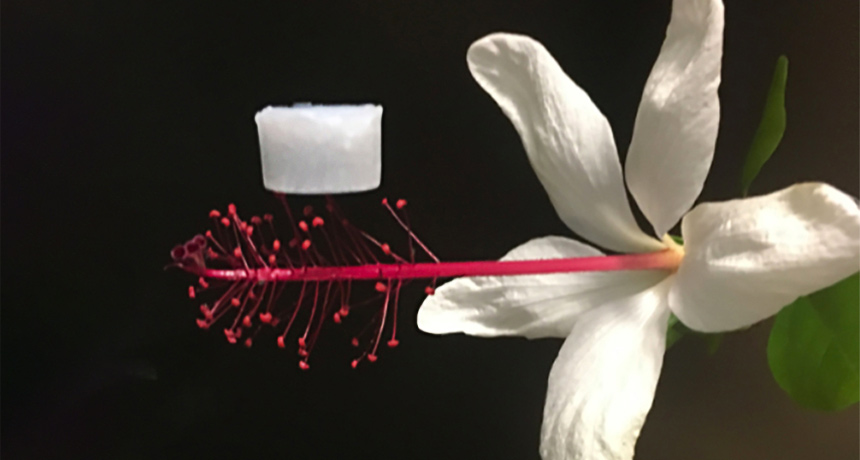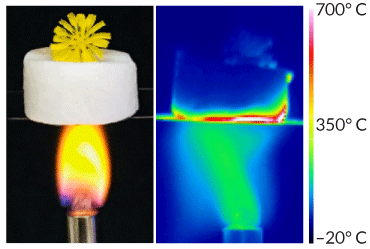A new insulation material is practically weightless yet still durable
The porous aerogel is at least 99 percent air

A new, nearly weightless insulation material can withstand extreme heat that would destroy other materials.
X. Xu, X. Duan
A new, nearly weightless insulation material can withstand extreme heat that would destroy other materials.
The porous aerogel is at least 99 percent open space, with the rest made up of an atomically thin ceramic called hexagonal boron nitride. The design proves extremely durable under high temperatures and rapid temperature shifts of over 1,000 degrees Celsius, researchers report in the Feb. 15 Science.
“It’s notoriously hard to make materials that are not just lightweight, but can also be heavily heat resistant,” says Deep Jariwala, an engineer at the University of Pennsylvania who coauthored a commentary on the study in the same issue of Science. The new ultralight insulator may be especially well suited to shielding components on spacecraft, which must endure extreme temperature swings when turning toward or away from the sun or re-entering Earth’s atmosphere, he says.
The aerogel comprises a network of tiny air pockets, with each pocket separated by two atomically thin layers of hexagonal boron nitride. Much like how double-pane windows prevent heat from escaping a house in winter, the double-pane ceramic barrier makes it difficult for heat to transfer from one air bubble to another. It’s also difficult for heat to spread through the material by traveling along the hexagonal boron nitride layers themselves, because that would require following long, circuitous routes, explains study coauthor Xiangfeng Duan, a chemist and materials scientist at the University of California, Los Angeles.
Whereas other ceramic aerogels are liable to break down under sudden temperature shifts or extended heat exposure, the new aerogel withstood 500 cycles of rapid heating and cooling from –198° C to 900° C, as well as sitting at a scalding 1400° C for one week. A piece of the insulator also successfully shielded a flower held over a roughly 500° C flame.
Because the material’s structure is so sparse, it’s probably not usable on its own, says Julia Greer, a materials scientist at Caltech not involved in the work. The aerogel is resilient in the sense that it’s soft and squishable. But to protect the aerogel from tears, it would likely have to be packaged inside a sturdier material, she says.








